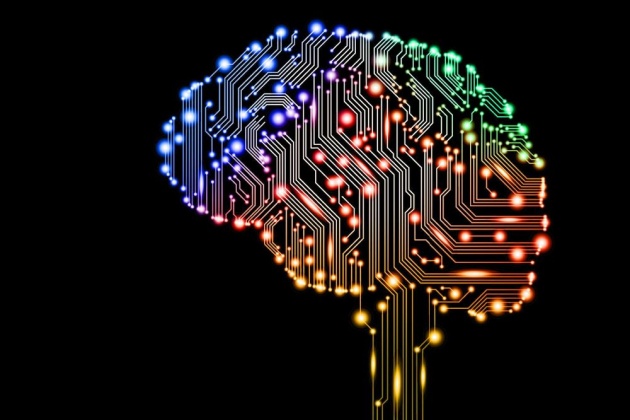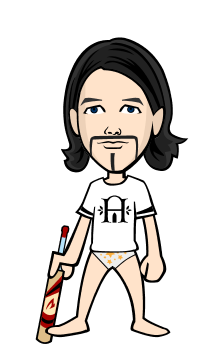 "Brave New Worlds and dystopian nightmares"
"Brave New Worlds and dystopian nightmares"
Science fiction emerged nearly 300 years ago during a time of great advances in science. Since then authors have tried to make sense of their world by imagining what the future will look like.
Post-apocalyptic societies, alien invasions, robots and environmental catastrophes have all played out in this genre which is still popular today. This timeline highlights some of the key moments in sci-fi literature’s history.
"Gulliver's Travels: Early science fiction"
This satirical travel narrative is considered by many to be a significant precursor of the modern science fiction novel.
Jonathan Swift’s provocative and controversial novel is infused with elements of science fiction. During his voyages the title character, Lemuel Gulliver, encounters utopian and dystopian societies as well as the flying island of Laputa, populated by scientists whose experiments are of no useful benefit.
"Frankenstein, or the Modern Prometheus: Mary Shelley’s warning"
Mary Shelley tells the story of Victor Frankenstein who engineers a living creature in a monstrous experiment.
Although Napoleon had been defeated at Waterloo in 1815, the early 19th Century was an era of political upheaval at home and abroad and many think this book promotes revolutionary ideas. Frankenstein is seen as a warning against the expansion of science without a moral context. In the deeply religious pre-Victorian age, suggesting a scientist could challenge God by trying to create human life was profoundly shocking.
"Twenty Thousand Leagues Under the Sea: Exploration of the unknown"
As exploration of the seas and oceans begins, the popular and influential adventure novel by Jules Verne is released.
Verne’s tale of the despotic Captain Nemo and his undersea adventures on the Nautilus inspires real scientific development. In addition to imagining diving equipment he expands on uses for a submarine. At this time, submarines are only in the very early stages of scientific development. The story is the forerunner of technology taking its ideas from sci-fi. Scientists and explorers such as Ernest Shackleton and Jacques Cousteau later claim him to be inspirational to their achievements.
"The Time Machine: A brand new concept"
The late 19th Century witnesses the growth of new technologies, such as the steam engine, telephone and electricity.
Against this backdrop, HG Wells introduces the idea of time travel. Wells’s first published novella appeals to the mass market. It fuses science journalism with popular romance, in a story of evolution which anticipates the end of humanity. He introduces the radical idea that the future will not necessarily look the same as the present.
"We: Influential dystopia"
Russian radical Yevgeny Zamyatin writes We shortly after the Bolshevik Revolution of 1917. It is published in English in 1924.
Zamyatin’s story is set in a dystopian society where men and women are numbered rather than named and live in glass buildings which allow their every move to be observed by the state. The novel suggests the dehumanising possibilities of technological development. It becomes a direct influence on George Orwell’s 1984.
"Amazing Stories: Defining the genre"
The origin of the term “science fiction” appears.
Journalist and magazine proprietor Hugo Gernsback launches a pulp magazine which initially reprints tales by Verne, Wells and Edgar Allen Poe. The magazine calls its fiction “Scientifiction”, which combines romance with prophetic vision and scientific knowledge. Gernsback later coins “science fiction” in his magazine Science Wonder Stories in 1929.
"Brave New World: Suggestions of a shocking future"
After visiting America, Aldous Huxley sounds a warning about the dangers of an all-powerful state.
Huxley imagines a dystopian world. His vision of the future questions where technology might take us. He sees a society where genetic engineering has become the norm, thereby eradicating the family. It is a society where science has eliminated unhappiness and the taking of mood-altering drugs is encouraged. Many aspects of his story are considered to be prophetic.
"Nineteen Eighty-Four: Totalitarian Britain"
George Orwell’s grim satire on Stalinism foretold the future even more.
Written during the Cold War, this book is set in a near-future Britain where a totalitarian party curtails all individual freedoms. The Government monitors all private and public activity. A number of concepts from the story, such as Big Brother and Room 101, enter popular culture and remain in use.
'I, Robot: Friend or foe?'
Isaac Asimov develops the concept of the robot first described by the Czech playwright Karel Capek in 1920.
I, Robot is a collection of short stories which focuses on the future role of robots in society. It introduces Asimov’s Three Laws of Robotics. These suggest androids should be programmed with controls determining how they behave around humans.
'The Day of the Triffids: A very British disaster'
John Wyndham’s tale of giant sentient plants is published. This novel is a perfect example of “cosy catastrophe” British fiction.
As rival author Brian Aldiss famously describes, the hero indulges himself in drink, girls and free suites at the Savoy whilst everyone else dies horribly. Wyndham wrote the novel following the atomic bombing of Hiroshima and Nagasaki and the story concerns the protagonist’s efforts to survive in a broken society which must be rebuilt.
'The Drowned World: A new wave of science fiction'
The first of JG Ballard’s sequence of novels dealing with “ecocatastrophes”.
JG Ballard’s ecocatastrophe expands the prospect of societal breakdown, this time after the polar ice caps have melted. It establishes Ballard as a major British writer of the “New Wave” of science fiction. His stories bring psychological interest and an experimental literary style to science fiction themes. Ballard's further ecological novels include The Burning World (1964) and The Crystal World (1966).
'Do Androids Dream of Electric Sheep? Exploring what makes us human'
The futuristic novels of Philip K Dick provide the plotlines for many modern sci-fi blockbusters such as Blade Runner and Minority Report.
Do Androids Dream of Electric Sheep? is set in a post-apocalyptic world. Dick is fascinated by the question of what constitutes a human being. Blurring the lines between humans and androids, he suggests androids can take on human characteristics, but lack compassion or empathy. The influences in Dick’s work include Jungian psychology, mental illness and drug use.
'The Left Hand of Darkness: A breakthrough for female authors'
The author, Ursula K Le Guin, is propelled to sci-fi fame following the success of her third novel about the Ekumen galactic empire. Le Guin's characters are androgynous, only adopting male or female characteristics once a month. The Left Hand of Darkness is considered to be a breakthrough for female writers in the genre.
'Memoirs of a Survivor: The end of society'
The well-known author and playwright Doris Lessing publishes a tale of post-apocalyptic societal breakdown.
The novel is written in response to the long-established English “disaster tradition”. Lessing's story of a not-too-distant future where barbarism is the norm offers an interesting class analysis of bourgeois fears of social regression.
'The Female Man: Examining gender roles'
This novel is influenced by the social and political movements of the 1960s.
Written by academic and feminist Joanna Russ this novel describes a positive community of women. Each of its four main characters inhabit parallel worlds in different historical times and spaces, living in fellowship and solidarity. Russ extends the literary tradition of Utopia first described by Sir Thomas More in 1516.
'The Hitchhiker's Guide to the Galaxy: Laughing in space'
Douglas Adams’s series, originally written for radio, introduces humour to the genre by lampooning the jaded genre of the British space opera.
Informed by Monty Python, its parody of life across the Universe recycles many beloved themes of science fiction, including rebellious technologies, time travel, galactic catastrophes and cosmic bureaucracy.
'Neuromancer: Establishing "cyberspace"'
William Gibson blurs the boundary between human and machine beyond the point of recognition, extending the narrative introduced by Asimov.
Neuromancer is classed as “cyberpunk”, a subgenre of sci-fi in which society is controlled by computers. Gibson’s “console cowboys” of a near future, chase one another through a virtual space known as the “matrix”. The author is now famed for his prophetic visions of technology. He coined the term "cyberspace" in previous publications, revisiting it in Neuromancer.
'Dawn: Exploring race issues'
Dawn is the first novel in Octavia E Butler’s Xenogenesis trilogy (1987 – 1989).
This novel examines racial difference in a tale of the alien Oankali who attempt to rescue humanity’s final survivors after a nuclear holocaust. Born in California in 1947, Butler grew up in a socially deprived, mixed race neighbourhood. For a number of years she was the only African-American woman publishing sci-fi. The Xenogenesis novels explore the concepts of reproduction between species, gender and sexuality.
'Red Mars: Reimagining utopia'
This trilogy breathes new life into science fiction in the 1990s.
The first book in Kim Stanley Robinson’s Mars trilogy (1993–1996), details the colonisation of Mars as an analogy to the western expansion of the USA. It reintroduces the role of the human to this tale of extraterrestrial migration. Robinson also re-engages with the idea of utopia, which has been maligned throughout the 20th Century by various liberal critics.
'Maddaddam: Bringing a new audience to science fiction'
Margaret Atwood follows up her science fiction interests first visited in the dystopia of The Handmaid’s Tale (1985).
Maddaddam is the third novel in Atwoods's trilogy written between 2003-13. It outlines a post-apocalyptic world following a catastrophic genetic engineering programme which has wiped out most of humanity. Atwood’s popular trilogy opens up the genre to a new audience not previously familiar with sci-fi. The author terms her work as speculative, rather than science, fiction meaning that scenarios in her novels are Earth-bound and plausible.



